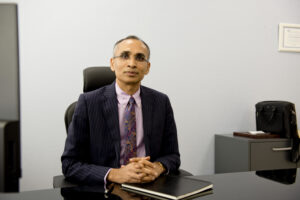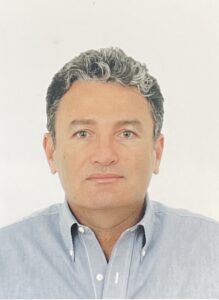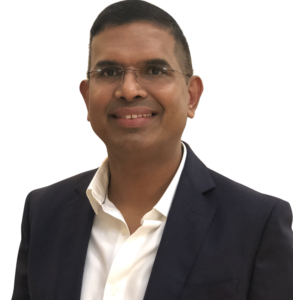A key narrative of the World Expo in Dubai has been about building for the future. With three strong themes – Sustainability, Mobility and Opportunity – many companies have worked behind the scenes to shape the built-environment across various features and country pavilions of the Expo. Here’s what some of them said of their Expo experience…
A common thread running through the World Expo, which commenced on October 1, 2021 and which concludes in end-March 2022, is about innovation and future preparedness. As per reports from the Expo committee, the first 10 days of the event attracted more than 400,000 visitors. Since then, in just 24 days since the start of the event, the number of visitors have swelled to nearly 1.5 million. According to the committee, the numbers are growing, and more visitors are coming over to explore futuristic innovations.
A major highlight of the Expo site is the dome at Al Wasl Plaza, which is the world’s largest 360-degree projection screen. More than 3,000 lighting fixtures and 1,000 speakers are contributing to a one-of-a-kind spectacle of masterful artistic collaboration. This is just one per cent of what the Expo has to offer across its 74 pavilions, though.
I spoke to four companies that contributed to providing comfort cooling to some of the features and pavilions…
Pramodh Idicheria, COO, Engineering and Healthcare Services, Oasis Investment Company LLC, Al Shirawi Group
What have you installed at the Expo site?
Al Wasl Pavilion is covered with a dome designed like a trellis that is 65 metres in height and 150 metres in diameter. The structure demanded a large number of indoor cooling units at various angles, fixed to the interconnected rings of S460 pipes. This had to be done with appropriate adjustment of blowers along with the removal of condensate water to minimise heat produced by the lights. Together, the team, comprising Leminar and Rheem, did extensive research and development and built a mock-up indoor unit with an impromptu model of the air conditioning units in the Leminar Service Centre, in Dubai. Once the unit provided positive results, it was transferred to the pod’s manufacturer in Mexico to understand the stress and operational capability. It passed the required tests and demonstrated its perfect fit for the trellis structure.

Pramodh Idicheria
We have supplied 84 individual VRF systems with a total capacity equal to 420 HP in this project. We have also supplied more than eight pavilions with VRF systems, with a total capacity of 806 HP. We have supplied the high-efficiency SAVR series VRF units with a capacity range from 8 HP to 14 HP. These have been supplied to Thematic Districts, Expo 2020-Dubai Developments, Mechanical Parcel Shell and Core, EXPO 2020 Al Wasl plaza Parcel B, Expo C38-District & Parks, Indonesia Pavilion, Spain Pavilion, C198 Pavilion and the Venezuela Pavilion.
Were you required to install customised solutions?
There was a lot of customisation for the special lighting at Al Wasl Pavilion. The lighting was built by a US-based company. Thus, there was a lot of coordination required by our engineers at the Rheem facility, in the United States, as well as coordination with the local builders. They were constantly interacting for a month only for the design and the kinds of systems requirements.
Subsequently, Al Shirawi Contracting also undertook work in Sweden, Uruguay and the Women’s pavilions. This was primarily waterproofing for the three main pavilions as well as 13-14 other pavilions.
Did you face any unique engineering challenges?
There were space constraints at the Expo site, as there was limited space. Then, the location of the condensing unit was another. After several meetings with the client, the space allocation was sorted out and managed.
Given that sustainability is a key theme, how intense was the focus on energy efficiency and indoor air quality?
The air conditioning of Al Wasl pavilion was with a VRF system. This was chosen over DX and chilled water central air conditioning plants. The VRF system was chosen, because it is more sustainable and consumes less power.
What is to happen to the installations after the Expo? Would there be continuity?
For us, all products we have supplied are a one-time installation. We are aware that there are going to be three options for the Expo site: The built structures would remain and be maintained, some pavilions would be converted into a mixed-use facility and some would be demolished and scrapped, post the Expo. For example, in the Sweden Pavilion, the interiors which we handled, a lot of wood came from Sweden. However, post-Expo, a lot of things from the pavilion will be taken back to Sweden. However, for our products, it is a one-time installation. Al Wasl Pavilion will stay, but we are not aware of the post-Expo plans.
Could you highlight the green initiatives?
For our contracting, in terms of the waterproofing and interiors, we tried to procure as many things locally. This reduced shipment costs and was more sustainable. Even for the ducting, all the steel used was procured from across the UAE and GCC region. Normally, we would import from Japan, but we opted for local manufacturers. Another important factor was the Galvanised Iron sheets – the main raw materials for the ducting; they were bought locally.
Raphael Khlat, Chairman, Faisal Jassim Trading Company
What have you installed at the Expo site?
We have been involved in the Expo right from the beginning. For the Metro project connecting the Expo to the city, we have supplied major equipment, such as fans for ventilation of the tunnels. This was a critical piece of equipment that is needed usually for fire and safety. This was also subjected to very critical commissioning standards. We have also supplied heat exchangers to cool the stations using district cooling systems.

Raphael Khlat
For the sustainability buildings, we have supplied air-handling units and fan-coil units, and those have been already fitted with DC motors that are very highly efficient motors. They have been commissioned to a lot of detail, wherein a consultant and the commissioning engineer have taken a lot of time to ensure certification of all the units.
We also supplied valves and pressure independent control valves for the Mobility and Sustainability buildings. Those valves are essential in controlling the flow and optimising energy for the air-handling unit and the air conditioning system, in general. They have also helped contractors to achieve the set temperature and design for the flow and pressures within the system. This was done to ensure the system is efficient.
We have also supplied all the grids, ducting and dampers for various pavilions and buildings. We usually supply the pre-insulated ducting system, which is known for high energy and efficiency and the capability of maintaining the temperature. We have installed a solar system for hot water in the Mobility building. There are three structures on the mobility building, wherein on the top, they have solar collectors, which are being installed to capture maximum heat. All these systems have also been assigned to very strict commissioning. The same approach for hot water has been done in the UAE Pavilion, as there was no possibility for a solar system. So, we have installed heat pumps, known to be much more efficient than standard heating element systems.
Finally, we have also installed pumping systems from Xylem across a big number of pavilions. We have also supplied electrical switchgear panels and conducted several installations, using ABB components in our pro-master system. It is essential to understand that we have adapted to strict requirements of sustainability within the buildings throughout the project.
In a nutshell, we have supplied to as many as 15-20 pavilions with our plastic conduit for electrical wires containment from our factory, Multiplast Dubai.
We supplied Flowtech air outlets, grilles and diffusers to the UAE, India, Ireland, Baden Wurttemberg and Luxembourg pavilions. We have supplied LV panels to more than 40 pavilions as well as to conference and exhibition halls.
We have also supplied pumps and systems across the projects, such as the Thematic District; Opportunity District; Al Wasl Plaza Parcels – A. B, E, F, G, H; Conference and Exhibition Centre (COEX), Sustainability District, Mobility District, and to Japan and Morocco pavilions.
Our scope was the supply of main distribution boards, sub-main distribution boards, control panels, motor control centres, capacitors banks and final distribution boards. The highlighting factor is that we designed and assembled ABB Trueone ATS (Automatic Transfer Switch), which is the first installation in the GCC region.
A key factor to consider for the product range is that we can modify the panels to suit new requirements, as per new load demands. We have used VFDs to ensure energy-efficient solutions. The equipment is adaptable, and they can, within certain tolerances, be adaptable to a particular change, load and capacity. They can also really adapt to lower and higher loads.
Were you called to offer customised solutions, given the unique structure of several features of the Expo?
Except for the solar system, there is nothing really that required a special design. All installations – especially for air-handling units – were selected for a particular duty that is required by the consultant of those applications. In general, our products are of very high quality, and we have always worked to ensure efficiency and optimal performance.
What unique engineering challenges, if any, did you encounter during installation?
Our major challenge was fast delivery and high-end specifications. It is seen that once installations have been commissioned properly to give the required output, the challenge is to keep them in top peak performance. This required continuous maintenance service.
How intensely did you focus on energy efficiency and indoor air quality?
Sustainability – energy efficiency and indoor air quality — was always a concern for us. It was, and has been, the common denominator in everything we have done. All installations have been selected to offer optimal energy efficiency. There are a lot of equipment, which have variable flows. Proper installation, balancing from valves and PICV and accuracy were very important during system commissioning.
S P Sarangan, General Manager, Trosten Industries Company LLC
Could you talk us through what specifically you installed at the venue?
We have supplied most of the airside HVAC equipment, like air-handling units, fresh-air- handling units with heat recovery and fan-coil units. Our journey at Trosten started with Hoare Lea Engineering Consultants, wherein, we were specified for all the thematic districts – Opportunity, Sustainability and Mobility.

S P Sarangan
Especially, the Eurovent certification for the fan-coil units, covering acoustic performance and certification for High Delta T and EC motors had given us an edge over most of the international and local manufacturers. Our psychrometric laboratory added confidence to our client by performance testing the units for various working conditions before delivery.
At Expo 2020, some of TROSTEN’s installations include Wasl Plaza, UAE Pavilion, Co-Ex (Conference & Exhibition Halls) and RTA’s ROUTE 2020. We are also able to share that we have installations of over 151 air-handling units for Route 2020, the largest Gold LEED-certified transport project in the world.
Did some of the buildings require customised engineering solutions?
MEP services always pose a challenge to the architecture, and we have demonstrated our roles, responsibly meeting architectural needs. Our company is known for its flexibility in customised solutions, by designing tailor-made units to suit any dimensional constraint; we have succeeded in satisfying the requirements of the contractors.
I would like to mention the fan-coil units of two different configurations in low height and low width for the same capacity. These gave a lot of flexibility to the consultants and contractors to choose from, based on the specific constraints encountered for every installation.
What specific engineering challenges did you encounter?
The most interesting engineering challenge was the ‘piston effect in the tunnel’ for the Route 2020 Metro project. This Metro project runs underground through tunnels from Al Furjan to the Green Community and has two underground stations.
The piston effect is a phenomenon that happens when a train passes through the tunnel and the air in the tunnel gets squeezed by the train. During this time, negative pressure is created behind the train and draws the conditioned air outside into the tunnel.
We had worked very closely with the Expolink Consortium engineers to analyse the variance in both positive and negative pressure, which can have an impact on air-handler performance. Numerous selections were run, and we selected the fans in such a way that they can handle any variance of the operating conditions. We also ensured that the fans are operated in the optimum efficiency band with suitably rated motors.
What specific focus did you give to energy efficiency and indoor air quality?
With sustainability ingrained in everything related to Expo 2020, Trosten has delivered the most energy-efficient HVAC equipment. At Route 2020, for instance, we have installed premium efficiency motors with high efficiency, direct-driven plenum fans to eliminate energy losses in the transmission between fan and motor.
At the Expo 2020 venue, we have selected and supplied air handlers with the lowest Specific Fan Power (SFP) values, which makes the system highly energy efficient. For the Co-Ex (conference and exhibition halls), we have supplied air-handling units with EC fans in an array to reduce input power, lower footprint and also to address redundancies, considering that Co-Ex is a critical application.
We installed EC motor fan coil units with energy savings up to 2/3rd of the conventional FHP motors at the thematic districts, including Co-Ex projects. That way, we firmly aligned ourselves with the sustainability theme of Expo 2020.
Air filters significantly influence IAQ and are directly related to the air pollutants and our health, as well. We have delivered our units with ISO 16890-certified filters, demonstrating filtration performance towards the most harmful fine specks of dust.
What performance metrics are you able to share with us from the time of commissioning and handover till now?
Commissioning of our Plant 2 facility in Dubai Investments Park enhanced our productivity to a great extent in meeting our regional requirement of HVAC products. Expo 2020 created a sudden surge in demand. To keep up on our delivery commitments and also meet the Expo timelines, we further expanded our infrastructure with additional manpower. We ensured that both our plants operated 24×6, with a single shift on Fridays. This timely intervention in managing the work process enhanced productivity, and we could comfortably meet the Expo management’s schedule on every project.
Thanks to Expo, since then, the factory team has been trained to work on a 24×6 basis, which has ensured continuous operation.
After the Expo is over, what would happen to the products you have supplied to specific areas? What is the likely usage profile? And would your equipment be able to handle the demands of potentially repurposed facilities?
We understand from the Expo organisers that once the event is over, the whole site will be turned into District 2020, a new urban development.
For the thematic districts, during the HVAC design and equipment selection, we have been asked to carry out equipment selection for additional working conditions to explore the maximum cooling capacity of each unit. We have carried out very detailed exercises. Once the Expo is over, the application of the site may vary; and as per our understanding, the MEP team would work around the available database to get more flexibility of using the existing HVAC installations for meeting the new requirement.
We have prior working experience of projects going through a transformation from shopping malls to hospitals and residential apartments to hotels.
Our unique modular construction of air-handling units gives lot of flexibility in modifying, adding or replacing the required components to meet the capacity requirements, as per the requirements of the repurposed profile. Unitary products, like fan-coil units, do not offer much flexibility with three-speed FHP motors in meeting the requirements of the revised application. With our supplies of EC motor fan-coil units to the thematic districts, we can achieve a wide range of airflow rates, including cooling capacities with 0-10 V control voltage input. This ECM feature will be a huge advantage when the profile of the current facility changes.
We have also supplied fan-coil units with FHP – AC motor for Expo 2020 pavilions with five-speed options, a standard feature for all the TROSTEN fan-coil units. This five-speed option gives the end-user the flexibility of running the unit at the chosen medium speed to suit requirements, which is not an option with most manufacturers.
Once the Expo is over, we will work in close coordination with the management of ‘District 2020’, understand their requirement and provide suitable solutions.
Eiji Ito, Managing Director, Panasonic Life Solutions Middle East & Africa; Hiroyuki Shibutani, Panasonic Marketing Middle East & Africa
What opportunities has the Expo provided for you to showcase your technologies?
Over the years, World Expos have been a key platform for us to display some of our greatest innovations.
At Expo 2020, Panasonic is showcasing several innovations at the Japan Pavilion. The major solutions being introduced are under the ‘Quality Air for Life’ theme. The solutions include the nanoe™ X technology-powered air conditioners, air purifiers and portable nanoe™ X generators. The ‘ziaino’, a specialised technology of air sterilisation for commercial usage, is also being showcased, followed by other B2B solutions, such as MirAIe – the home IoT platform.
Our solutions ensure that our customers breathe clean and healthy air whether in a car, at home, hospitals or while at school.
Panasonic has always benefited immensely from World Expos. The company is showcasing its regional strategy by introducing solutions that enrich lifestyles in the new normal. We would also like to highlight the six-month display of projection mapping solutions and mist solutions at the Japan Pavilion and other pavilions.
Copyright © 2006-2025 - CPI Industry. All rights reserved.